I’ve been impressed by the Silky line of tools. Made in Japan, they have good steel and hold sharp edges. After discovering and using the Silky Nata, a traditional type of Japanese hatchet, I was curious to see how the same materials performed in Silky’s Ono, a Western-style hatchet.
The Ono weighs a hefty 1 lb 11 oz and has an overall length of 12″ and a blade length of 4-5/8″. Its full-length tang has the same removable and replaceable rubber hand grip as the Nata, and the 7/32″-thick SKS-51 steel is ground to a 20-degree double bevel, also just like the Nata. A chrome plating resists rust.
The Ono’s case is made of heavy-duty nylon fabric and its interior is lined with plastic sheets to resist damage from the blade. In its case, the hatchet can be hung from the aligned holes in the case and blade. A hole in the end of the handle is provided for a lanyard
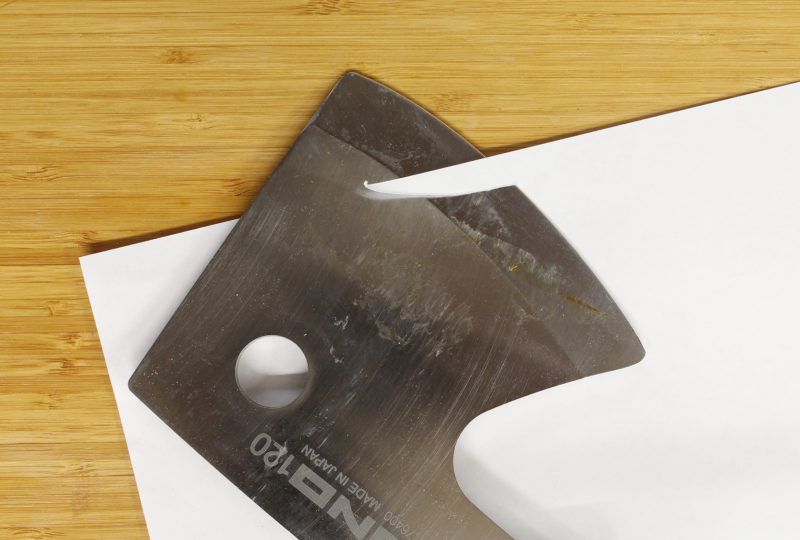 Photographs by the author
Photographs by the authorA little stropping of the factory edge made it sharp enough to cut cleanly into the edge of a piece of paper.
Although the Ono came with a sharp edge from the factory, I gave the blade a quick stropping. With that finishing touch, the Ono could cut cleanly into the edge of a piece of paper. In the woods, I found a fallen branch from a maple tree. The wood was well dried and quite hard, but the Ono cut though a 1″-thick section of the branch, set on a log, with one blow; a 1-1/2″-thick branch took two blows. I sawed a length from the 3″-thick end of another branch, set it on end on a log, and easily split it into kindling.
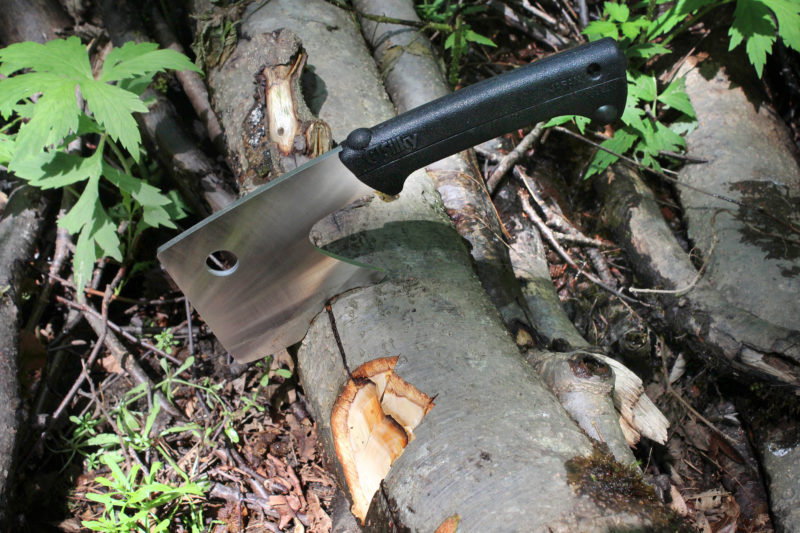
The Ono’s heft and sharp blade give it good chopping power.
The rubber handle has an oval cross section and a textured surface for good grip. It is just soft enough to absorb the shock of impacts. For such a short hatchet, the Ono’s well-balanced mass of steel packs a good wallop. The blade is especially long for its overall length, making it easier to hit the target. I never overshot the wood and struck the handle of the hatchet, and even if I were to, there’d be none of the damage that would be inflicted on a hatchet with a wooden handle.
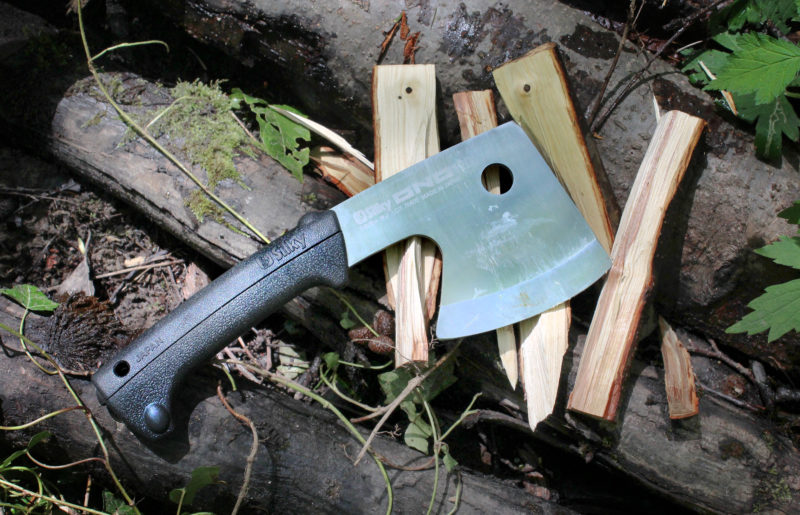
The Ono’s weight provides plenty of power for chopping and spitting.
Using the Ono as a carving tool, I easily shaped a small piece of western red cedar into the tip of a paddle blade, chopping first to rough out the shape and then using the hatchet as a chisel of sorts to smooth the surface.
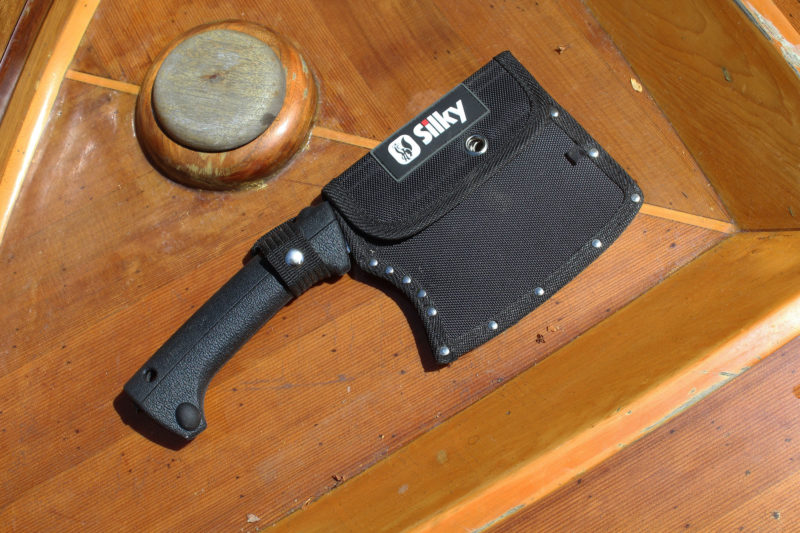
The sheath for the Ono has a webbing loop on the back side for hanging, handle up, from a waist belt.
Most hatchets have a poll or butt on the back end of the head that can be used as a hammer. The back of the Ono is only the thickness of the steel and while it’s narrow, I’ve used a hammer for as long as I can remember, and my aim is pretty good—I didn’t have any trouble hitting nails on their heads. For improvised tent stakes, I chopped a quick point on a stick, then rotated the Ono handle 90 degrees to use the side of the blade to drive the stake. I felt that was safer than having the sharp blade coming toward my face in between blows.
I like the configuration of the Ono—a small hatchet with a big blade—and found it as able a cutting tool as the other Silky tools I’ve bought. ![]()
Christopher Cunningham is the editor of Small Boats Magazine.
The Silky Ono is available from Silky for $119. Online outdoor recreation sites also carry it at the list price.
Is there a product that might be useful for boatbuilding, cruising, or shore-side camping that you’d like us to review? Please email your suggestions.
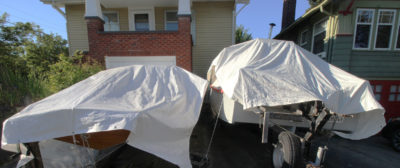


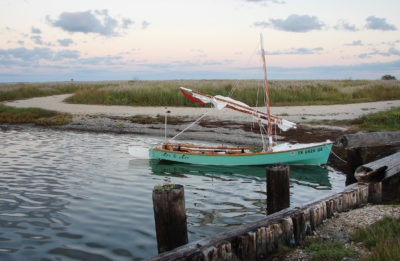
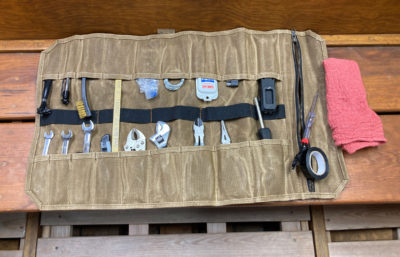
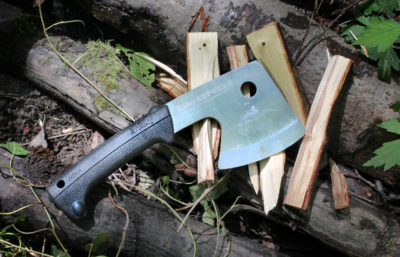

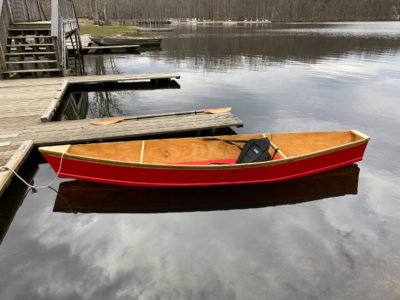
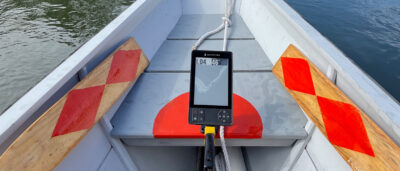
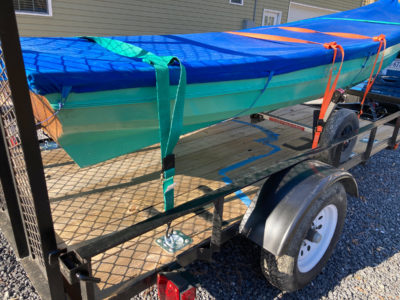
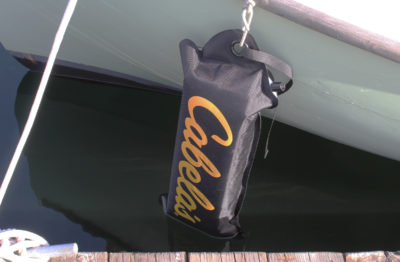
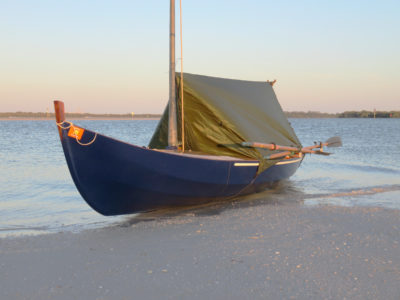
In 62 years around the Sun I’ve never needed to wallop anything with a hatchet, but after reading about this one, I am on the prowl.